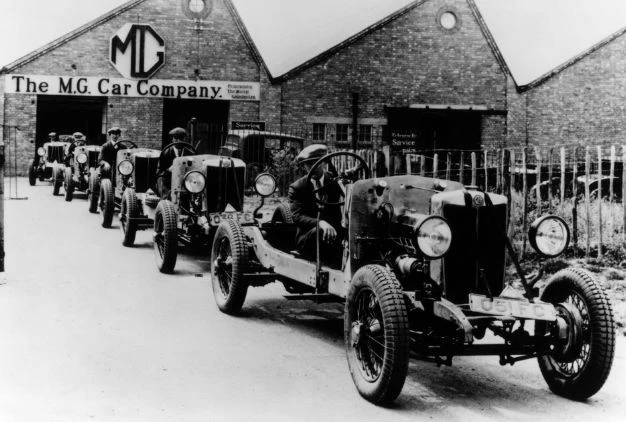
Famous for their elegant roadsters that motorised a generation of wind-in-the-hair car enthusiasts, MG is now better known for its stylish and good value electric cars. It was born in 1924 and named after Morris Garages, the Oxford agent for Morris cars. Manager Cecil Kimber developed a profitable business producing special versions of Morris cars, with improved performance and more dashing style.
A separate MG brand duly emerged. The first roadster to hint at the famous MGs to come was the M Type Midget of 1929, Britain’s first inexpensive and practical sports car. MG became especially famous just World War 2, with the iconic TC roadster. It not only wowed young-at-heart Brits but was also a huge success in the US, where there was more money and sunnier skies.
Popular roadsters such as the TD, TF, MGA and MGB followed. They were successful globally, and especially in America. MG also made performance coupes and saloons.
MG became part of the British Motor Corporation (BMC) in 1952, and later part of nationalised British Leyland, subsequently renamed MG Rover. Its fortunes waned: nonetheless there were still MG performance versions of everyday cars (including the little Metro) and happily even a new roadster, the well-reviewed MGF. In 2005, MG Rover went bankrupt.
It became part of China’s SAIC – headquartered in Shanghai – in 2007. Nowadays it is one of the UK’s fastest growing car brands, renowned for its good value, sharp style and advanced electric cars. A design centre in London ensures British creativity still influences the famous 100-year old car maker.
MG is also returning to its roots with a new roadster, the electric-powered Cyberster – a sports car that mixes MG tradition and the latest EV technology.
Hendy currently represents MG at 3 outlets.

.jpg.webp)